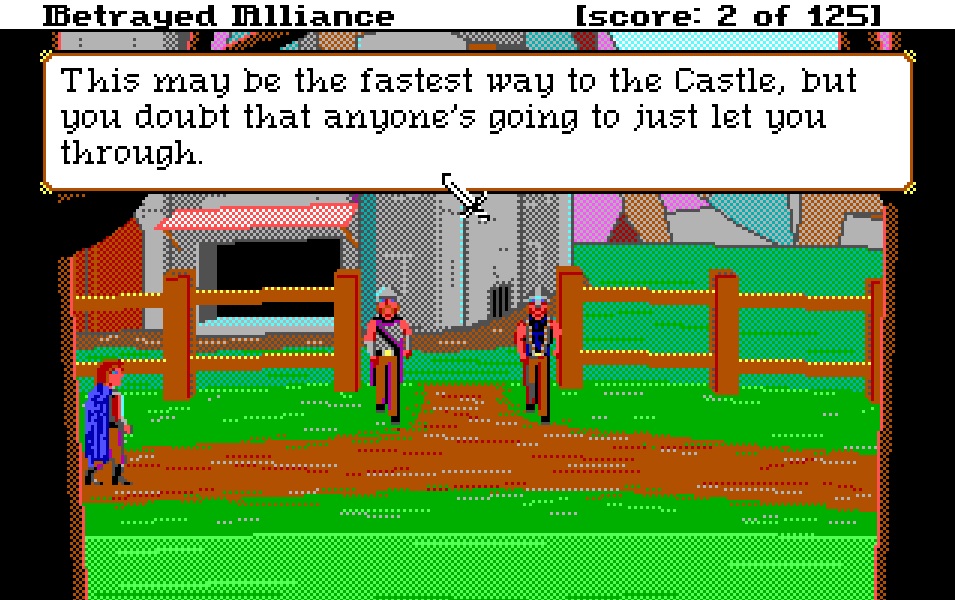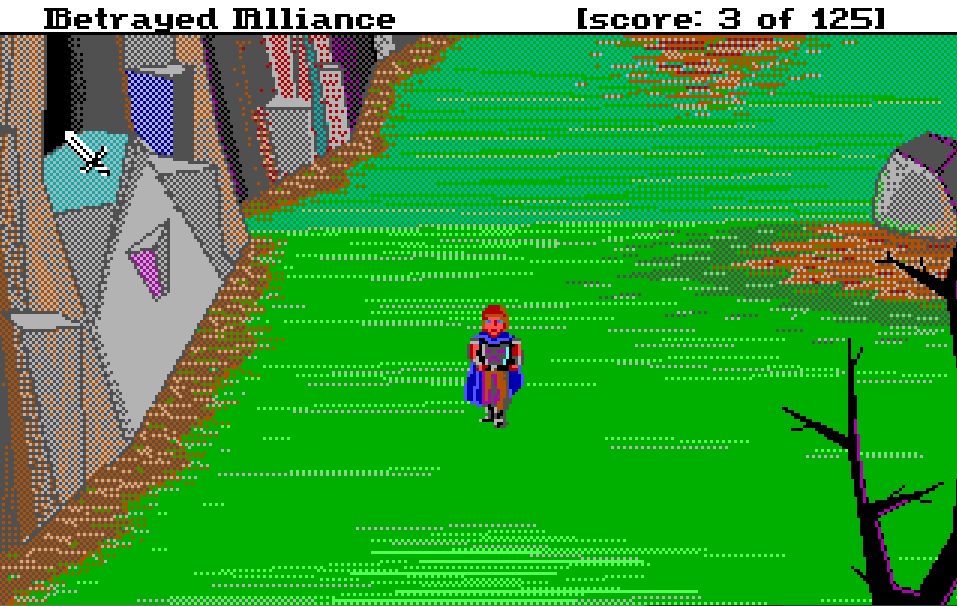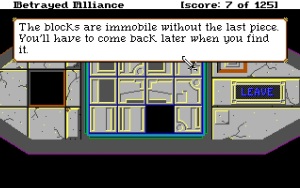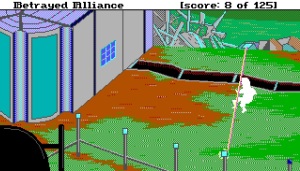
Update: This article contains potential spoilers for Betrayed Alliance Book 1, which you can download free of charge here.
I’m biased. I made the game I’m looking at today. But that bias cuts both ways. No one sees the flaw in their art like the artist. Of course, the flaws the artist sees are usually not the flaws others find, but that’s where you can help. I’ll give you my perspective, then you can supplement it with yours!
All that aside, I’m going to talk about one thing I believe works well in the game, and that is the Structure of the Overworld and how it plays out for players seeking their goals. We’re not talking artistic direction here, but rather game design.
The Main Objective
After the first self-contained room of the game, you are plopped into the overworld and from there are tasked to “find the princess” (A very original video game goal, I know!). The wizard tells you the Princess is being held captive in the castle, but the way there is barred by excessive combat, and the game spells it out for you just in case you didn’t get the message in combat. There must be a better way in.

So where to go? Well, if you ask any person in the game about the princess, they will all universally tell you they heard a rumor she was taken to a cave in the north east. So this becomes your first goal.
Exploration Along the Way
And it’s here that I think the game gets two things right in its design:
- The route to get to the cave will take you across the entirety of the overworld, and along the way you will run into many puzzles, some of which you can solve and some which you cannot. And because of that:
- It allows a lot of freedom to explore. This is something I loved about Quest for Glory 1. You are dropped in a town with very limited direction and you get to just go out there and find things. I wanted to replicate this feeling, but with more of a concrete goal.
One of the rules of puzzle design is “don’t put the key before the lock.” If the player solves the puzzle before even seeing it, that’s not a good sign. So in the normal course of things, you’ll want to come upon a problem, then discover a way through or around it.

For instance, in Betrayed Alliance, you will come upon a cave elevated above the ground. Climbing to it is the first intuition, but it doesn’t work. Players will tuck this place away in their minds and come back later if they finds something that might work.
Another example along the way is a tile puzzle with a squirrel. This time, however, the solution was provided before the puzzle (assuming the player investigated the area before arriving here). Players will find an acorn and then they will run across this hungry squirrel. The next step is evident. Players give the acorn to the squirrel and the squirrel activates the puzzle. But there’s a snag – the puzzle still isn’t solved, just activated. So after tinkering with the tiles for a moment or two, players will leave with another mental note. Again, they’ve found a lock, but don’t yet have the key.
Mitigating Frustration
“But won’t this become cumbersome or frustrating to players?” I hear you asking.
Yes it will be! If every time a player comes upon a puzzle or obstacle with no way to solve or bypass it the “exploration” part of the game will lose its luster because the “interaction” part isn’t working well.
To avoid that feeling, I wanted to make sure there were things players could do and succeed in along the way. For instance, there is a shovel players are able to find on their way to the cave, and there are a couple places where they are able to use it to successfully fill in their teleport map (which will make backtracking to the puzzle locations later all the easier). Additionally, players can discover four of the five missing library books along the way to the cave, play up to three mini-games, best soldiers in combat, and talk to different characters discovering new things about the world and the plot. In this way the player isn’t frustrated with the locked areas because not everything is a locked area.
When players arrive at the location of the cave, they’ve already traversed (or at least could have) the entirety of the overworld and found four areas they can’t access, but now can be on the look out for ways to progress.
All the while through to the first area the player has found plenty to things to occupy their time and fill their hunger for success. The feeling of not progressing at one of these areas is mitigated by the fact that there are still more areas to find.
That frustrating feeling of “not knowing what to do” is usually triggered not by a puzzle itself, but when the player feels they’ve “been everywhere” and “tried everything.” That’s when things get truly frustrating!
Size Does Matter
One final thing that works in this game’s favor is that the Overworld map is not cripplingly huge. I think if it were doubled in size, having the player traverse the entirety of that distance would become disorienting and the multitude of blocked areas would be hard to keep in mind all at once. Having the southern area blocked by soldiers was mainly due to the fact that those assets hadn’t been created yet, but even if they had been, having them blocked for the first part of the game would still have been a good idea.
The Rest
After the cave, the game becomes far more linear as it’s now a matter of visiting the “off-limits” areas from before and discovering their secrets and solving their puzzles. I think that’s where the game falls into some “less-than-good-design” traps (It’s hard to just say “bad design” when I’m talking about my own game!), but analysis of that will have to wait for another time.
That’s my analysis of the overworld structure in Betrayed Alliance and how it plays into the puzzle structure in a positive way. The first part of the game is very open and free, and the first quest takes you across the whole overworld, presenting many of the games puzzles before you find the solutions.
I’m not saying it was perfect of course, and perhaps you have some other thoughts or considerations to share!











